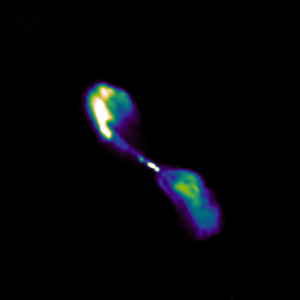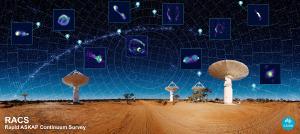Blog
To See the Southern Sky
4 December 2020
 CSIRO/ASKAP
CSIRO/ASKAPAlthough radio astronomy has been around since the 1930s, it is only in recent years that astronomers have been able to make high-resolution maps of the radio sky. Sky maps are difficult for radio telescopes because radio antennas need to be focused on an extremely small patch of sky to capture images in high resolution. But with modern antennas and computer processing, we can now scan the sky quickly enough to map the heavens in a reasonable amount of time.
In the northern hemisphere, the most detailed radio sky maps have been done by the Very Large Array (VLA). In the 1990s the VLA made the first full-sky surveys of the northern sky. After its upgrade in the 2000s, the observatory began the VLA Sky Survey (VLASS), which has mapped nearly 10 million radio sources.
 CSIRO
CSIROThe location of the VLA lets it observe about 80% of the sky, but it cannot see the southern sky very well. For that, you’d need a radio observatory in the southern hemisphere. Fortunately, there is now a powerful radio telescope array in Australia, and it has recently made a detailed radio map.
It’s known as the Rapid ASKAP Continuum Survey (RACS), and it was done by the Australian SKA Pathfinder radio telescope. In just two weeks of data gathering, RACS captured images five times more sensitive than previous surveys, and with twice the resolution. The first data release has mapped a million previously undiscovered galaxies in the southern sky.1
 CSIRO
CSIROThis survey marks the first step towards a new way to view the radio sky. The fact that the survey was captured in weeks, not years, means that we can observe changes in almost real-time. Combined with optical surveys and others, we will finally have a detailed view of astronomical events as they happen. It will help us understand transients such as fast radio bursts, and will certainly reveal new phenomena we’ve never expected.
D. McConnell, et al. “The Rapid ASKAP Continuum Survey I: Design and first results.” Publications of the Astronomical Society of Australia 37 (2020): 048. ↩︎